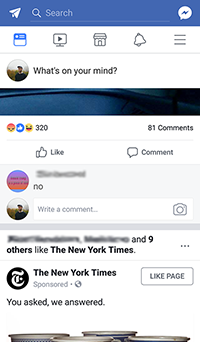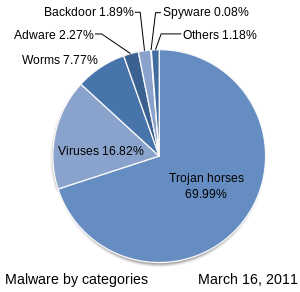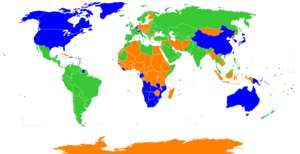By Hector Cisneros
Since the advent of the Internet society has changed.
We have gone from face-to-face relationships to a society that
prefers social networking. We have cyber friends we don’t even know. Young people today would rather text you than speak to you in person. Facebook now runs commercials showing
that people would rather be on their Facebook phones, reading their news feed,
than interacting with their families at the dinner table. The fact is we live
in a cyber-enabled world. So, if you want to build strong relationships and get
ahead, you need to learn how to make friends and influence people in the 21st
century.
A couple of years ago I wrote an article called “How to win
Friends and Influence People in the 21st Century. In that article I
emphasized the law of reciprocity. The law that states what goes around comes
around. That means if you help others,
they will in turn help you back. This was
my magic formula for growing my business, my reputation while building trust
among my customers. I also advocated providing others with
testimonials letters, as well as referrals and recommendations long before the
advent of social networks. Word of mouth marketing is built on your reputation.
It depends on building trust and credibility.
Think of social media as an electronic form of word of mouth
marketing. It allows your referral partners and
| Image via CrunchBase |
happy customers to sing your
praises to a worldwide audience, an audience that can spread that positive or
negative message quickly, reaching far beyond your
customer base. In my previous article I also mentioned that my social
networks have built-in functions to pass along recommendations and
testimonials. LinkedIn, Ecademy and FourSquare were the examples I gave. Since
that writing LinkedIn has added an additional endorsement function where you
can just click on a person’s skill to recommend them. However, I still prefer
that you write a genuine testimonial letter and upload it. This will carry more weight than just
clicking on someone's skill set as an endorsement.
As a general rule, the more work you do to help someone, the
greater the value and weight your efforts carry. Don’t limit your
recommendations to just one social network. Post your recommendations on as
many networks as possible. I often post my recommendations on the top five
social networks. This includes Facebook, YouTube, Google+, Twitter and
LinkedIn. But don’t stop there. Posting
to other networks like Merchant Circle, AnglesList, Google Local and YollowBook
also helps. I also like making
recommendations on blogs and websites, if it has the facility to allow you
to rate them there.
A quick note about YouTube; many people don’t think of
YouTube as a social network, however it has all the features of a true social
network. You subscribe to it. You can follow other accounts, build a following,
| Image via CrunchBase |
make and receive recommendations and leave comments on a person’s posts. More
importantly you can create a video testimonial for the person you’re trying to
help. In today’s world, nothing is better than a video testimonial from a happy
customer. Commercials are full of actors faking their endorsement. But a customer’s eyes rarely lie. Today,
videos are the king of testimonials. More people would rather watch a short
video that read anything. This is especially true of your testimonials.
Unscripted, spoken from the heart words of praise are priceless marketing
weapons without equal. Do everything in your power to help your customers
provide this valuable service for you and your company. This can include
providing incentive for the completion of a recommendation etc.… However, the
law of reciprocity only works if the testimonial that is given is genuine. You
must earn their recommendation by providing them with good service or a valued
product.
Many social networks allow you to upload pictures and or
videos. Note that written testimonials, referrals and recommendations can be
saved as PDF and JPG files, essentially turning them into pictures and downloadable
documents. This is another way you can upload testimonials to social networks
like Twitter, Google + and Facebook. Don’t forget to upload your video
testimonial to these channels also. This includes other rating sites like
Google Maps and Google local. As a matter of fact many “Local Directories”
provide a place for you to upload pictures and videos. Use these to your
advantage. I would be willing to bet if
you do, you will be one of the few that use this strategy and it will give you
a big advantage.
| Image via CrunchBase |
Today there are also lots of tools that make it easier to
post your recommendations and testimonials. These
tools provide leverage so
that you can post to multiple networks simultaneously. You can even schedule
post asking people to read your testimonials’ and recommendations. There is no
rule that says you can’t post this type of request more than once. Just don’t
do it too often or you risk alienating your following. My favorite tool is
Hootsuite and it is free at Hootsuite.com.
A few last notes to consider. Today, your reputation
(individual and business) extends far beyond the boundaries of your business.
Anyone can research your reputation and they believe what they read and view.
Social media has become the great equalizer. It some cases, it has also become
the spoiler. This is especially true if a competitor is trying to soil your
reputation. The viral power of social networks allows a reputation to be passed
around the world quickly (good or bad). It behooves you to make disgruntled
customers satisfied. Making things right is the best way to turn a bad
situation into a positive recommendation.
I have spent the last 20 years of my business life following
the law of reciprocity and it has served me well. I have dozens of
recommendations and have a clean online reputation. I work hard at keeping my
reputation clean, not by tricks or burying bad news by launching a massive PR
campaign that pushes that news off page one. Instead
what I concentrate on is helping
others first and then making things right if I make a mistake.
| Twitter 6x6 (Photo credit: Steve Woolf) |
I do this
because I believe it’s the right thing to do. If you don’t believe me, try this
experiment. Pick a number of referral partners, (I chose 30 when I did this
experiment) and write testimonials for them. Post them to the top five social
networks, (or whichever ones you’re on) and then let them know that you
provided this service for them. Ask them if they could reciprocate by doing the
same for you. You will find that your reciprocity rate will be between 30 and
50% most of the time. If you do this experiment three or four times you will
have helped a lot of people and in turn helped yourself by gathering a handsome
number of recommendations to boot. Keep in mind that this will only work if you
have built trust and credibility with others. If they don’t know, like and
trust you, asking them for a recommendation is not going fly either.
In this article I have covered the law of reciprocity and
how it allows you to win friends and influence people in the 21st
century. I have discussed how you can use this principle on a variety of social
media including the top five social networks and others like Angieslist,
Merchant Circle and Google Local. I have included suggestions on how to
leverage your time and given insight to using YouTube as a social network and
testimonial tool. If you have enjoyed this article pass it on to your friends.
If you have other ideas, thoughts or comments on this subject share them with
our readers in the comment section. If I
or my company can be of any service, call, email or write us and we will
contact you personally.
That’s my opinion. I
look forward to hearing yours.
Hector Cisneros is CFO of W Squared Media Group, a Jacksonville, Florida based Internet marketing agency. You may also hear Hector live on Working the Web to Win every Tuesday at 4pm Eastern.




















